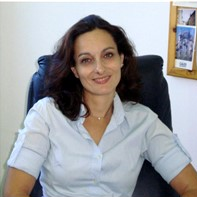Mining Waste Management and Resource Recovery
A special issue of Recycling (ISSN 2313-4321).
Deadline for manuscript submissions: closed (30 May 2017) | Viewed by 15249
Special Issue Editors
Interests: resource recovery; sustainable materials; green manufacturing; transformation of waste collection; mining and agricultural waste value adding
Special Issues, Collections and Topics in MDPI journals
Interests: mine waste management; acid mine drainage; environmental management; TQM systems; sustainable development of natural resources; recycling; environmental impact studies; mine planning
Special Issues, Collections and Topics in MDPI journals
Interests: surface mining planning and optimization; mining economics; environmental impact assessment of mining; mining waste management; applications of digital technologies in decision making
Special Issues, Collections and Topics in MDPI journals
Special Issue Information
Dear Colleagues,
The focus of this Special Issue is on the value and importance of mine waste management and sustainable mining management. Mine waste management, recovery, and recycling are becoming increasingly important due to increasing expectations from governments, non-government organisations, and local communities. Mine waste management can be a significant challenge for many mining companies given the large volumes of mine waste produced and the environmental hazards associated with the mine waste. Modern mine waste management plans have to include both the storage and long-term stabilisation of waste. In addition, many mining companies are now being forced to consider mine legacy values post the completion of mining operations. Mine waste can include tailings, slags, sludge, overburden, waste rock, water, solids, and gaseous waste. These wastes are dependent on the ore, the mining process and extractive technology used. Many benign mine wastes can be used in landscape reconstruction, vegetation rehabilitation, road and dam construction, backfill, dust suppression (recycled waste water) and land reclamation. However, new and innovative uses for mine waste management practices are also being developed that help to reduce the negative impacts of both mining operations and mine closures and are increasingly being incorporated into the design and planning of new mines.
The publication of this Special Issue will hopefully add to the sharing of knowledge and also in the establishment of best practice methodologies in sustainable mine waste management.
Prof. Dr. Michele Rosano
Dr. Katerina Adam
Dr. Maria Menegaki
Guest Editors
Manuscript Submission Information
Manuscripts should be submitted online at www.mdpi.com by registering and logging in to this website. Once you are registered, click here to go to the submission form. Manuscripts can be submitted until the deadline. All submissions that pass pre-check are peer-reviewed. Accepted papers will be published continuously in the journal (as soon as accepted) and will be listed together on the special issue website. Research articles, review articles as well as short communications are invited. For planned papers, a title and short abstract (about 100 words) can be sent to the Editorial Office for announcement on this website.
Submitted manuscripts should not have been published previously, nor be under consideration for publication elsewhere (except conference proceedings papers). All manuscripts are thoroughly refereed through a single-blind peer-review process. A guide for authors and other relevant information for submission of manuscripts is available on the Instructions for Authors page. Recycling is an international peer-reviewed open access semimonthly journal published by MDPI.
Please visit the Instructions for Authors page before submitting a manuscript. The Article Processing Charge (APC) for publication in this open access journal is 1800 CHF (Swiss Francs). Submitted papers should be well formatted and use good English. Authors may use MDPI's English editing service prior to publication or during author revisions.
Keywords
- tailing management
- mine waste recycling
- mine waste planning
- resource recovery







